Are Concrete Planters Safe For Plants?
Worried that your concrete planter is bad for the health of your plants? I have answers and the fix!
Whenever I create a tutorial on how to make a concrete planter, the question I am asked most is – “are concrete planters safe for plants?”.
The short answer is yes, plants can be safe in concrete planters. But there are things you may need to do to prepare the concrete pot before planting certain types of plants.
Here’s what you need to know about cement pots when it comes to the health of your plants.

Plants are finicky creatures, as you know, it’s very easy to overwater or underwater a plant. If they don’t have proper sunlight, they can die, but plants can also easily be burned by too much sun.
And if things are complicated enough, plants also have a preference for the composition of soil and for the pH of the soil.
Yikes, it’s amazing that as many potted plants actually do just fine with all these complicating factors, isn’t it?
Please refer to the Plants In Concrete Planters FAQ at the bottom of the page, after reading.
Are Concrete Planters Safe For All Plants
Concrete can be harmful for some plants because most cement and concrete mixes contain lime. And lime is the culprit that raises concern as to whether it’s safe to grow plants into cement and concrete pots.
Though not toxic, lime has a high pH level, making it highly alkaline. Some plants won’t prosper or even survive in soil with higher alkalinity.
The reason there is lime in most concrete mixes is because most US manufacturers of concrete and cement, use portland cement as the base material for their branded mixes. Portland cement contains lime.
Then they will add other minerals and compounds to it for various reasons like to increase strength, increase working time, or to shorten curing times.
Though there are probably more plants that need acidic soil, you’ll be happy to know, there are plants that need an alkaline environment.
Succulents are a great example of alkaline-loving plants and thrive in higher alkalinity. They are a great fit for planting in a concrete or cement planter.
Other than most succulents, here are some other plants that do great in concrete pots because of the pH of the soil:
- Begonias
- African Violets
- Orchids
- Morning Glory
- Mums
- Easter Lilies
And even vegetables and herbs like:
- Broccoli
- Cabbage Chives
- Arugula
- Oregano
This article has a much longer list of these alkaline-friendly plants.
Some of the links on this page have been provided as a convenience for finding materials. These links may also be affiliate links. As an Amazon Associate I earn from qualifying purchases, at no extra cost to you.
I only recommend products I’ve used and loved, unless otherwise stated. Click here to read my full disclosure policy.
Currently, I have 21 cement or concrete planters that have plants in them and most are succulents. To see these, take a look here for the tutorials on 21 Unique Concrete Planters You Can Make.
I didn’t use a leaching process for any of them, and only one of them is sealed.
When I tested my soil, I found that the pH range is 7-8. For reference, a pH scale is measured 0-14. 7 is neutral and below that is acidic and above that is alkaline.
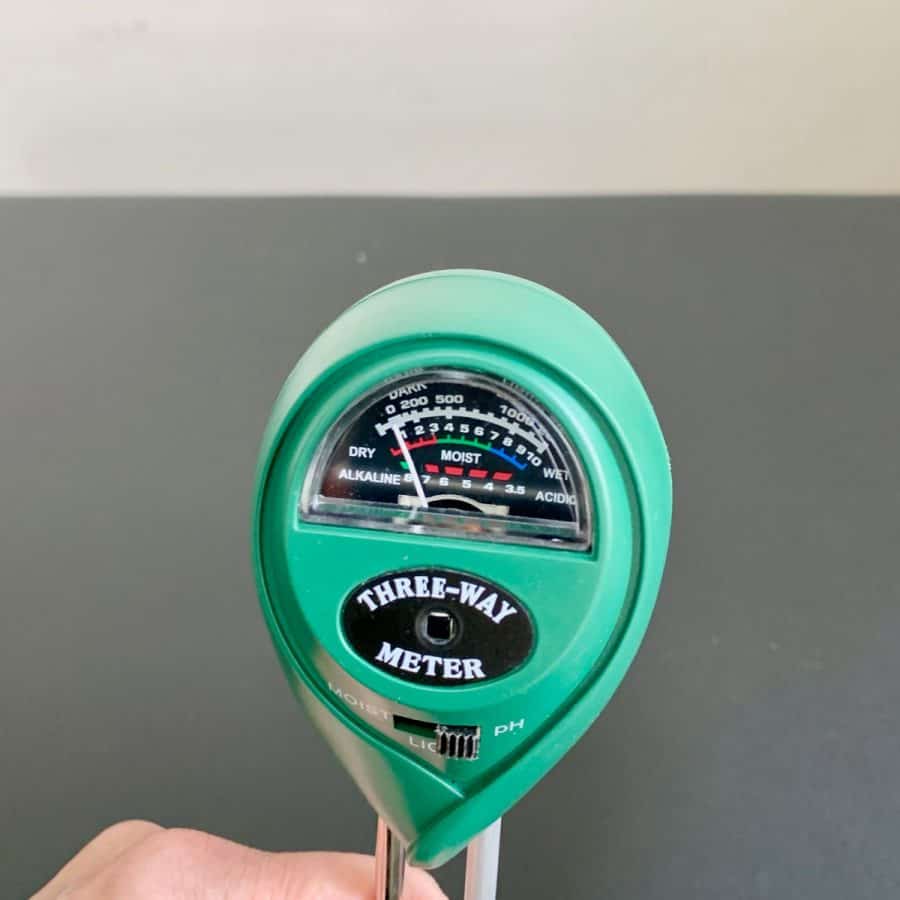
However, these tests were done months after the plants were potted.
It’s when concrete is fresher or more recently cured, that the higher amounts of alkalinity leach through. So the pH may have been higher shortly after potting.
My succulents, for the most part, have thrived in these planters.
Note: Please refer to my sealing test showing the evaporation differences in sealed cement vs. unsealed, as well as soil water discoloration in sealed planters.
Making Concrete Planters Safe For Plants
However, if you want to make a DIY planter from concrete or cement, and your plants are types that prefer acidic soil, then hold tight because there are easy fixes for this.
First, you can change the pH of your soil by adding sphagnum moss, iron sulfate or organic mulches.
This doesn’t always work well, but there are easier and more sure fixes.
The best solution for keeping plants healthy in concrete planters is to soak the planter in water for three days. Soaking the cement or concrete will quickly leach the alkalinity out of it. More on this below.
Some people will just leave their planters out in the rain for a few days before planting.
Manually leaching out the alkalinity is likely good enough, but if you want to be extra safe, then you can seal them.
Based on my sealer tests, I found this concrete sealer to be the best choice for a concrete pot.
You can also skip the water leaching process and just seal them, this should be effective enough.
Now before you seal your planter, take into consideration that the great thing about a concrete pot isn’t just that they are beautiful, but they also serve an important function.
Concrete and cement planters in their raw form (unsealed) are porous. Having a porous material is a benefit to plants as it helps control overwatering.
Concrete really is the best choice of material for a planter.
If you seal the planter you will be making it non-porous. But there are other good reasons for sealing concrete, which is that it will help reduce efflorescence.

Efflorescence is the white residue that you see coming through cement after soil comes through. It’s the minerals in the soil that can leave this residue.
Sealing a cement planter can help preserve the longevity of the pot, as well as protect any added color. This is the same whether added to the mix or colored after the cement has cured.
It’s up to you whether or not you want to seal your containers. My opinion? If you are planting succulents in them, there’s no need.
If I were to pot plants that need acidic soil, I would simply soak them in water and still leave them unsealed.
What about concrete planters bought from a store, are they safe for plants?
It is very likely that these have already gone through a leaching process and soaking them in water isn’t necessary. It is also likely that the planters are already sealed.
Do you want to know how to make a concrete planter from start to finish? Then check out the How To Make Concrete Planters- Everything You Need To Know, which is the ultimate guide in how to make them!
I’d be remiss if I didn’t mention that there are plenty of plants you can keep in planters outside during cold weather. They can be in concrete or cement planters and many other types as well. Here’s a list of 17 beautiful plants for pots during winter.
Quick Steps For Making Concrete Planters Safe For Non-Alkaline Loving Plants
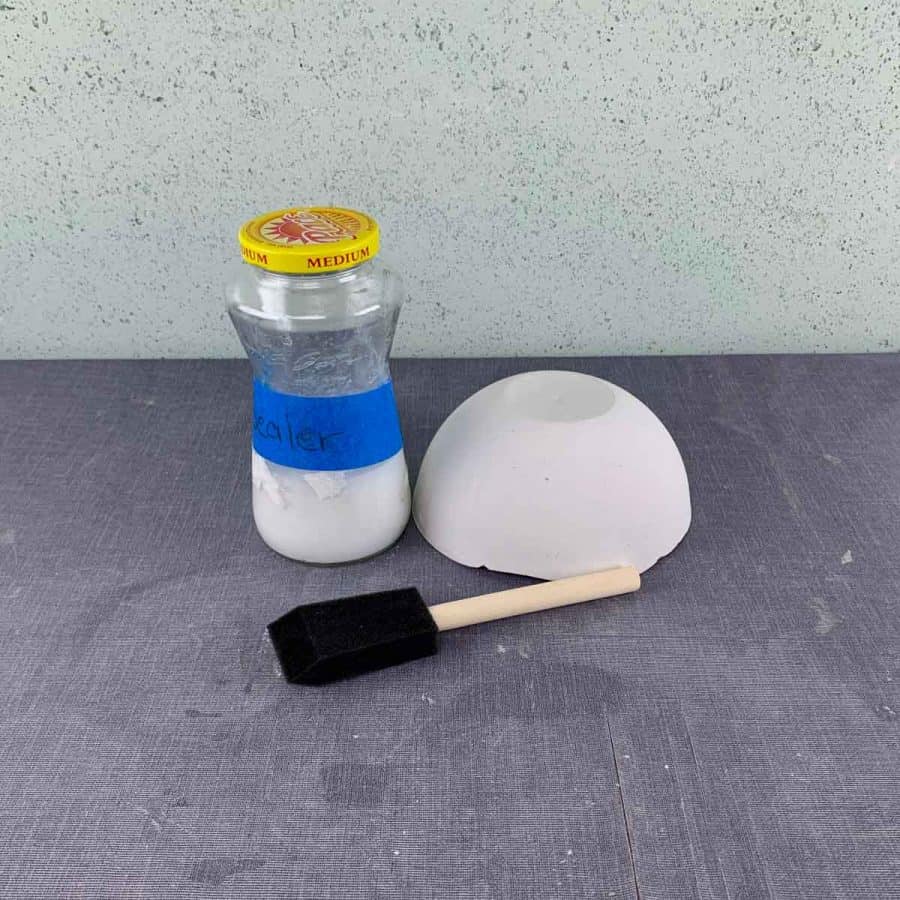
Option 1. Apply A Sealer To The Concrete To Reduce Alkalinity
Seal the planter inside and out using either acrylic paint or a concrete sealer. Seal it both inside and outside using a foam brush to apply it.
Keep in mind that you have made the cement planter non-porous by doing this. Porosity is one of the benefits of using a cement planter.
Here’s an in-depth article all about how to seal a concrete planter, and more about when you should and shouldn’t seal one.
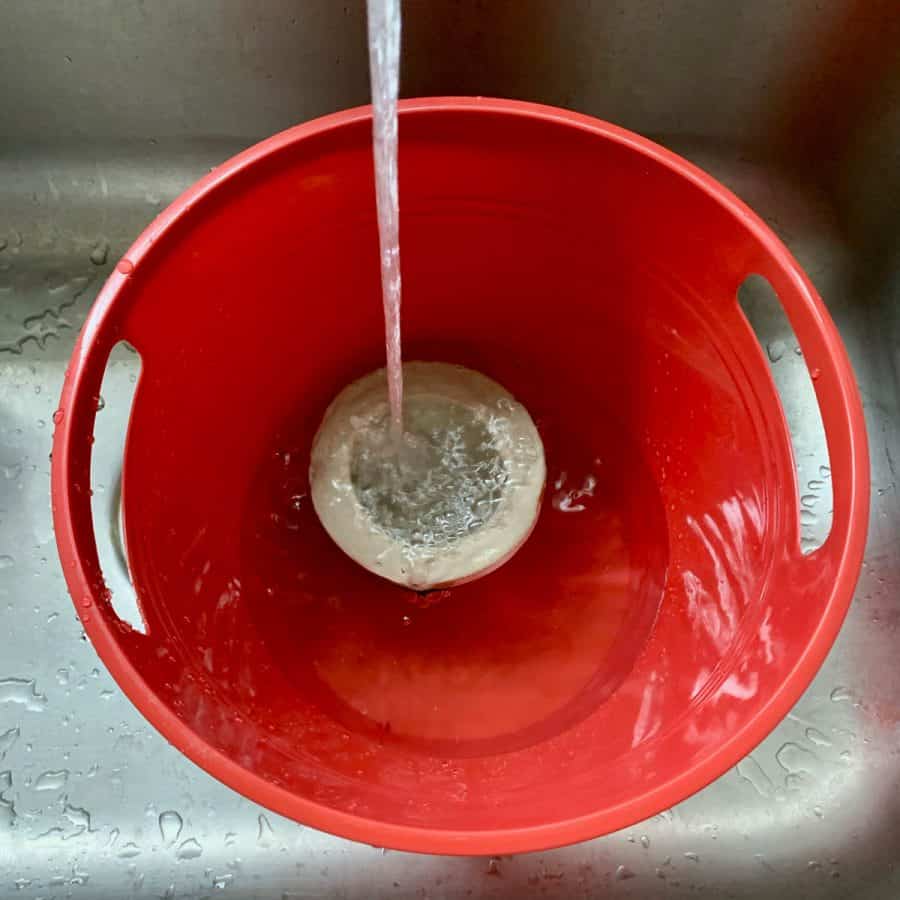
Option 2. Reducing Concrete Alkalinity Via Leaching
Soak the planter in water for three days before potting the plant. This will be effective at reducing alkalinity. Also, be sure to refresh the water each day.
You do not need to seal this, but if you would like to, then be sure to let the cement or concrete fully dry.
Option 3. Change The Soil Composition To Reduce Cement Alkalinity

Add sphagnum moss, iron sulfate or organic mulch.
Or do a combination of each of the above steps.
For a great article on the benefits of different types of pots for plants, check out the Micro Gardener’s article. It offers information on choosing the best container material for your pots, not just concrete.
And this article explains the differences between six concrete mixes and which one is best for cement crafts like planters.
To see some of my concrete planter tutorials, you can check these out-
Cement Balloon Planter
Green Marbled Concrete Planter
Pink Cement Planter
And for all other concrete and cement tips, you can go here.
Concrete Planters And Plant Health FAQ
Concrete is not actually toxic and is not toxic to plants. That said, concrete can potentially be harmful to some plants.
The reason for this is because concrete contains lime which is highly alkaline. Many plants can’t thrive in soil that has high alkalinity and instead need soil that is more acidic.
Most concrete planters that are purchased at stores are safe for any plants because they likely have gone through a leaching process and have been sealed.
If you want to be safe, you can leach out the alkalinity by soaking the concrete planter in water for three days.
Cement is good for plants like succulents.
In general, both concrete and cement pots are fantastic options for potted plants because they are somewhat porous and will allow some moisture to get through.
This makes plants easier to maintain because it’s much less likely you will overwater them than if they were in a planter that is plastic or any other non-porous material.
Cement and concrete are the same in terms of which is more suited for plants. They both contain lime and will leach alkalinity.
The ph level of the soil will be approximately the same with either concrete or cement.
You can neutralize concrete by soaking it in water for about three days. Soaking concrete or cement in water leaches lime through the pores.
The benefit of doing this is that some plant types may not thrive, or even could eventually die, due to high alkalinity. You see, lime has a high pH, making it very alkaline.
However, plants like most succulents, often thrive in soil with a higher pH and so lime leaching a concrete planter or pot isn’t necessary.
It is safe to grow vegetables in concrete pots, planters and containers. However, if you are making these yourself, you should leach them for three days.
Typically concrete planters that are purchased from a store will already have gone through that process and are also very likely to be sealed.
So you can feel safe planting vegetables in concrete and cement pots.
Terra cotta and concrete pots may require more frequent watering, but will overall be the best material for most plants because the alternatives can cause bigger problems.
Containers that are non-porous, such as ceramic pots and plastic pots, hold excess water, which can easily lead to root rot. These types of containers will require drainage holes.
The best plants for concrete planters are succulents.
This is because succulents like soil that is more on the alkaline side and concrete leaches lime which is highly alkaline.
However, you can plant any type of plant in a concrete planter, but you may want to soak it in water first.
Do this for three days and change the water out each day. This will speed up the process of leaching out the alkalinity.
If you are still concerned about high alkalinity, you can choose to seal the concrete planter in addition to soaking them in water.
Concrete pots only need to be sealed if you are growing a plant in the pot that needs more acidic soil.
You see, concrete contains lime which can cause the soil to become alkaline.
This is a good environment for succulents, but many plants will not be happy in this soil.
Sealing the concrete will help prevent some of the lime from leaching into the soil.
However, I recommend soaking the pots in water for three days before sealing. This will quickly pull much of the alkalinity out of the concrete.
And then follow it up with your sealer.
Another benefit of sealing DIY concrete planters is to prevent efflorescence. Efflorescence is caused by the minerals in concrete leaching through and causing a build up of white residue.
Sealing them can eliminate this or at least reduce it.
The best concrete sealer for planters will depend on what your end goal is. The reason for sealing a concrete planter is for two reasons.
One is that it can make the concrete a little more durable and the other is to help prevent the leaching of lime, which is an ingredient in most concrete and cement products.
This is the concrete sealer I typically use when sealing concrete.
The issue with lime is that it is very alkaline which can harm plants who by nature, like to grow in soil that is more acidic.
Concrete pots do not kill plants. Concrete contains lime which bleeds into soil when it gets wet.
The excess lime will mix with water to create a high pH level in the soil that can be harmful to many plants which prefer acidic soils.
It’s best to know which type of soil your plant will thrive best in. Typically succulents thrive best in soils with high alkalinity.
But as mentioned above, you can soak the concrete planter for three days in water, to leach out the alkalinity to neutralize it.
The best options are going to be pots that are porous. If you aren’t comfortable with concrete containers, you could go with terra cotta.
Other planter materials are:
Plastic pots
Ceramic planters
Wooden pots
Metal pots
Ceramic, metal and plastic containers may not be the best choice because they retain excess water because they are non-porous and will require drainage holes.
Even with a drain hole, there still may be too much moisture and you may need to take care to not overwater.
Don’t forget to Pin it for later!

Don’t forget to Pin it for later!



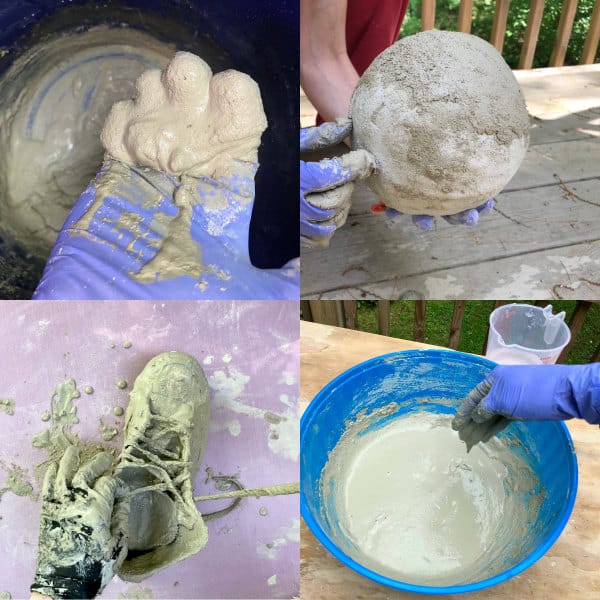
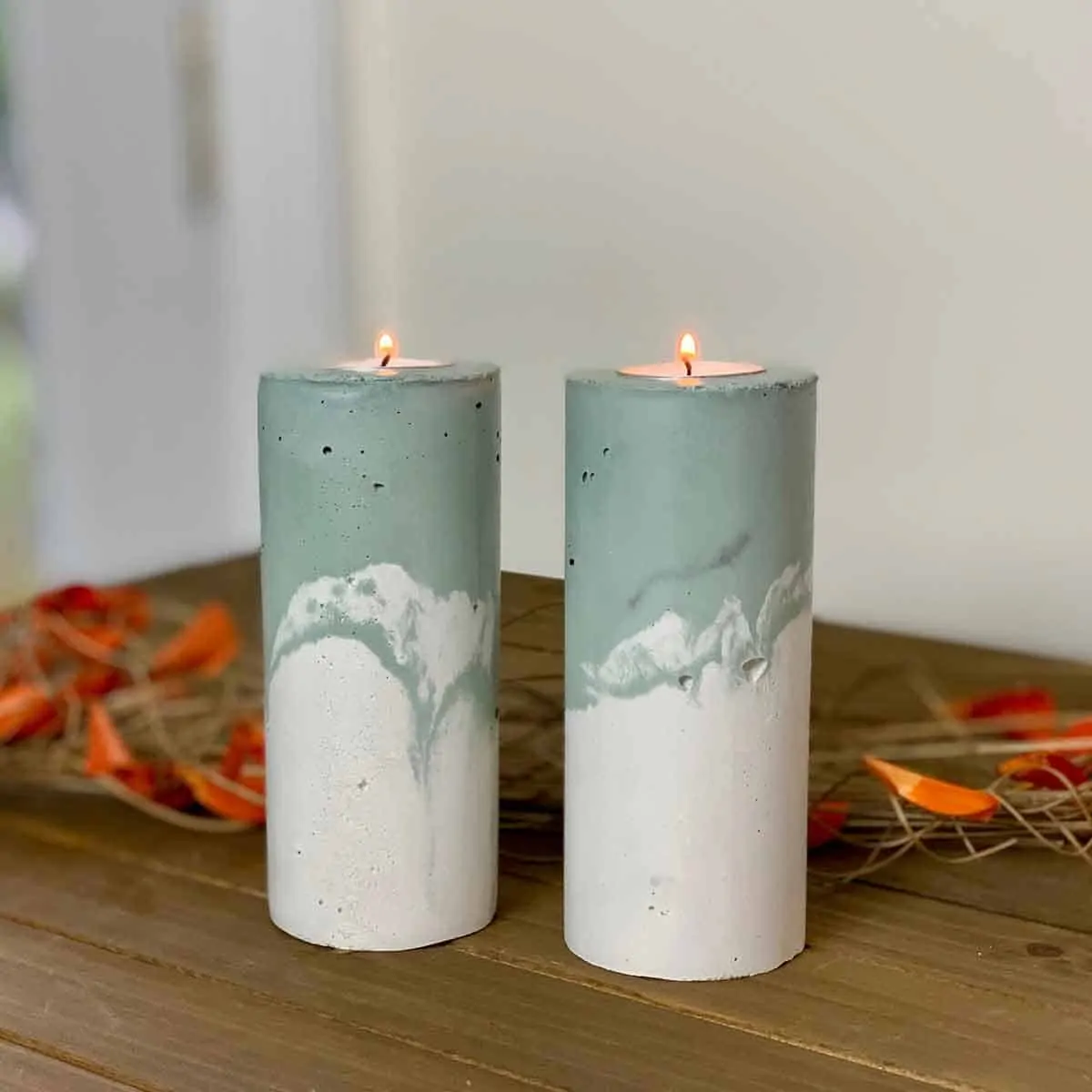
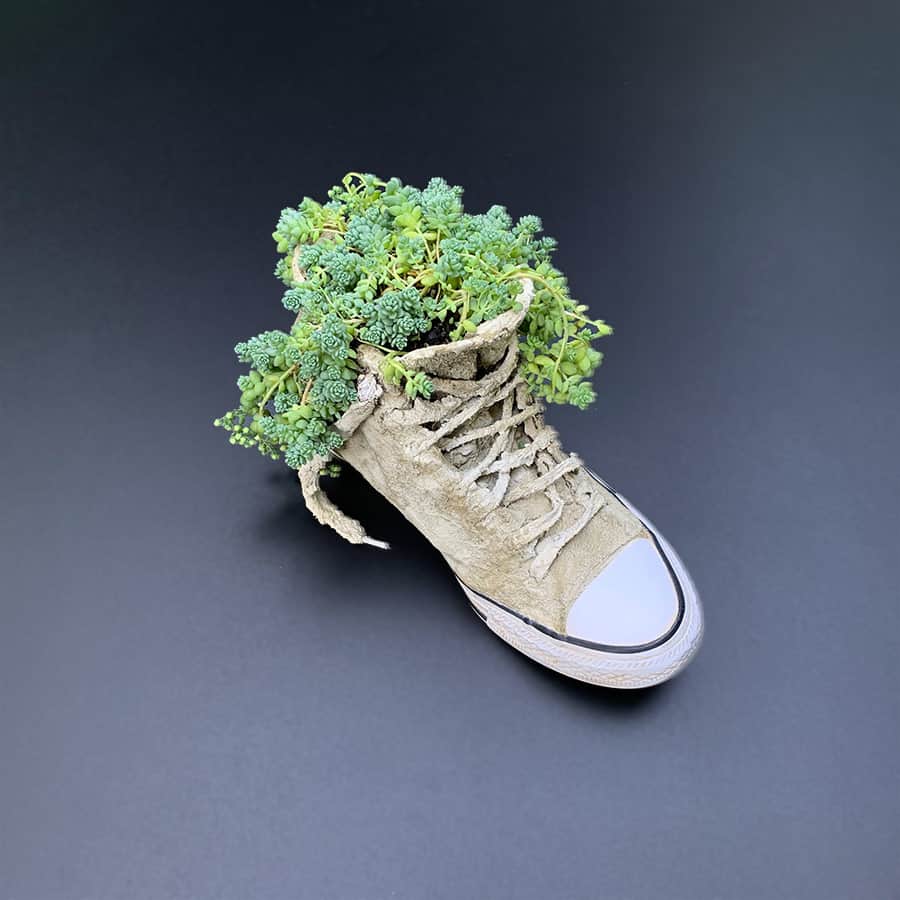
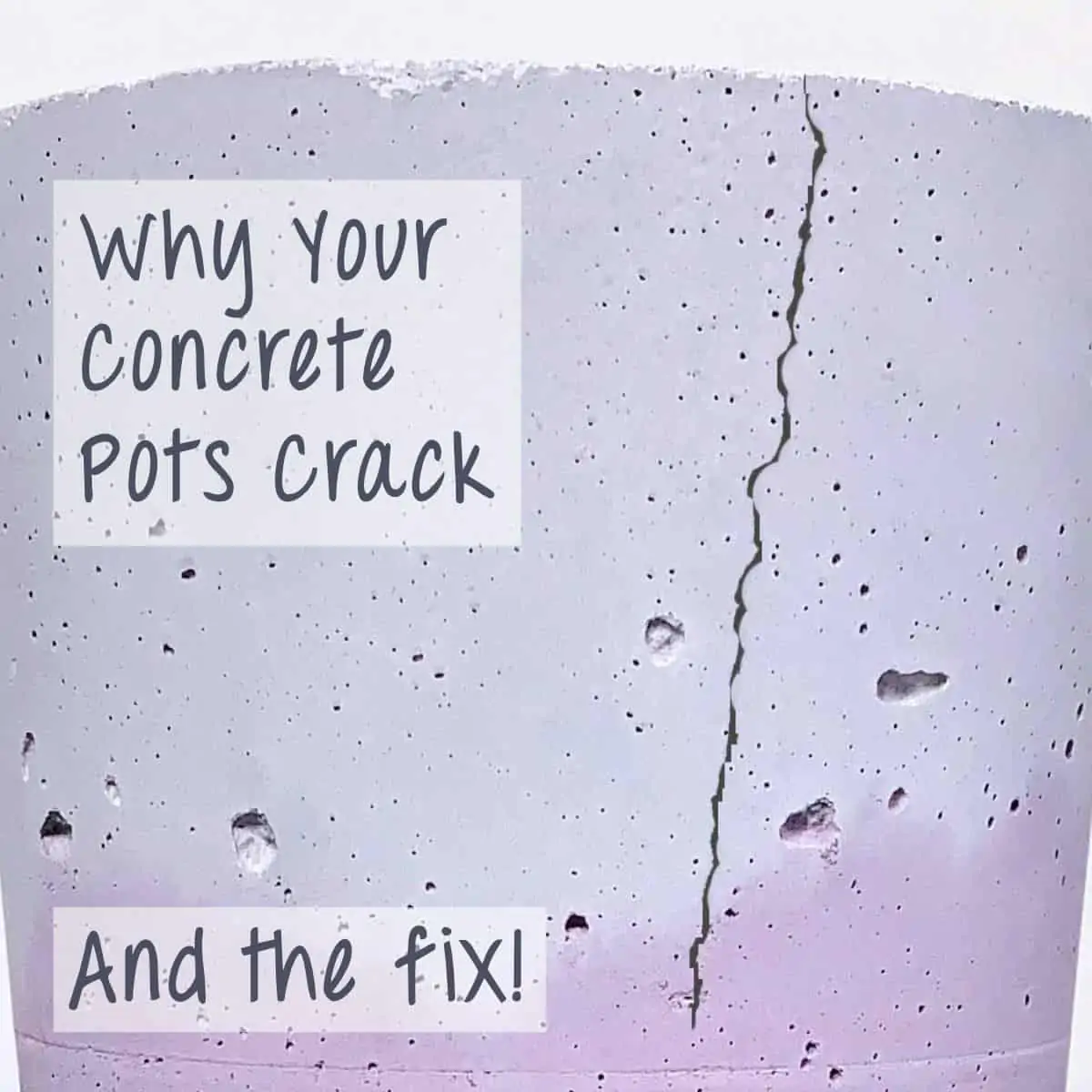

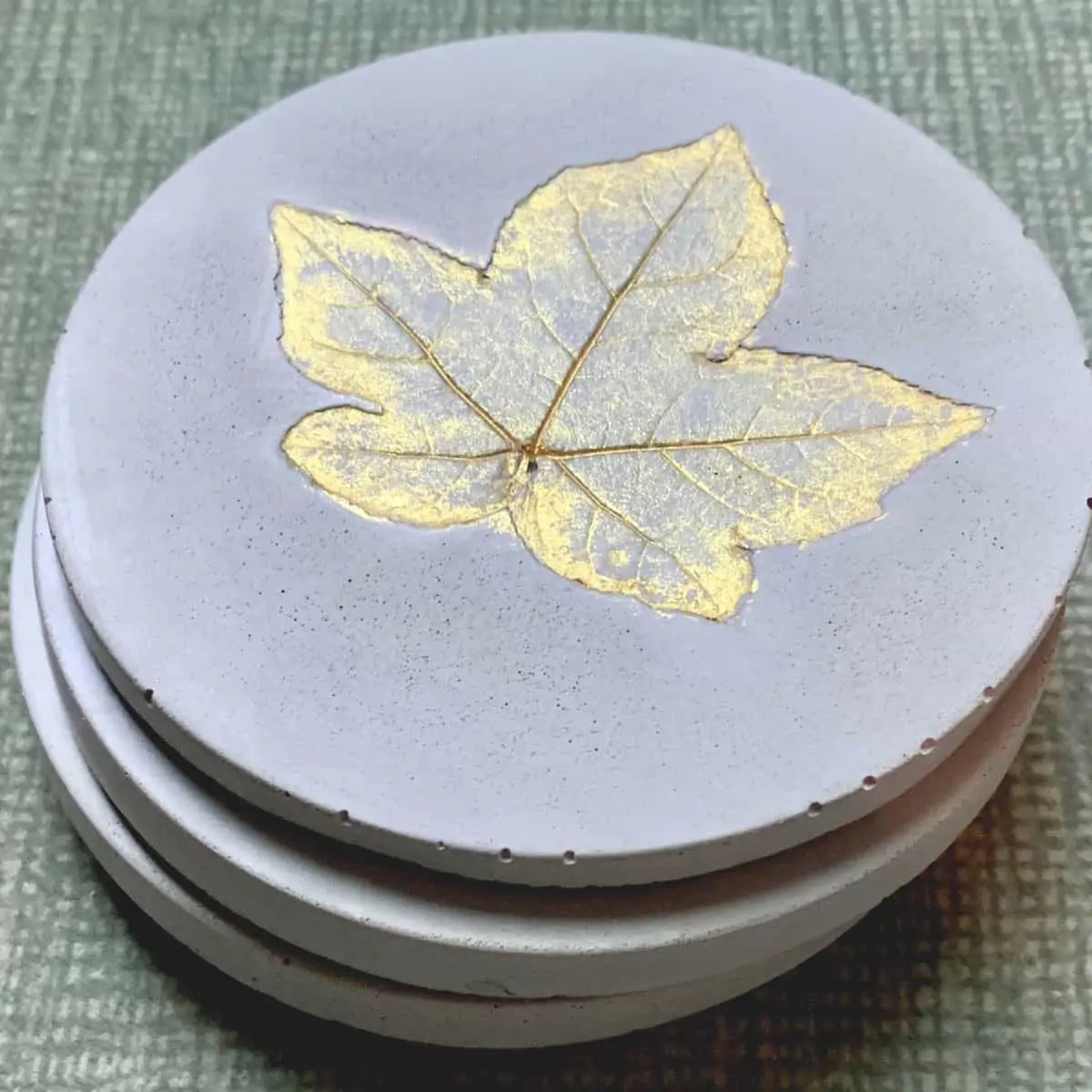
Excellent, detailed information! I really appreciate the time you invested in sharing this information. Thank you!!
Hi Sue,
Oh good! I’m so glad you found it helpful. You are very welcome.
Such great info! Thank you for sharing. I’ve been running into snags with some of my planters and your explanations have helped me understand where I went wrong. Wondering if you have any suggestions for making concrete pieces food safe? I’m lining up a dog bowl project.
Thanks!
Hi Shannon,
So this is a question I’m never sure how to answer. Since people have concrete countertops and use food-safe wax on them, it seems reasonable to assume you could make a dog bowl from concrete. I’m not entirely convinced of this since the water sits in the bowl, and you don’t necessarily put food on your counter, let is sit there and then eat it.
You would definitely have to leach the bowl in water for at least 3 days, and change the water each day, then perhaps it could be safe. I honestly don’t know the answer.
To be completely safe, I would use a stainless insert. I have cats and have considered doing this as well, but am not comfortable. Sorry, I wish I had a better answer.
Thank you so much. I think I will look at a stainless insert. That’s a great way to go.
Cheers!
What about planting flowers next to a sidewalk? How can I assure the ph is correct and not too alkaline?
great article. I like to point out that because of the concrete planter’s porous nature, my soil dries out so much faster leaving my soil hard and almost void of all moisture while the outside of my planter feels damp because it’s absorbing it like a sponge thus requiring very frequent watering.
Hi Steven,
Are these planters kept inside or outside? Do you have succulents in them, or other types? Mine are outside 9 months out of the year and are nearly maintenance-free with succulents. Inside though, yeah, they dry out quickly from the heat running. I just let them get quite dry and probably water them once every 3-4 weeks, but I give them a really good soaking. They’ve been doing great that way. The succulents that are outside and are in non-porous containers (I only have 3 of these), I have to add lots of perlite to compensate for all the moisture. I still have trouble with them and will eventually move to concrete.
Love all the concrete ideas!
I was wondering if it would be ok to plant strawberries in the cider blocks?
Hi Carolyn,
Unfortunately I do don’t have an easy yes or no answer of this one. If you paint them, then probably, but it’s complicated. I’m linking to the article for making a concrete block planter box. In the final step #4, I explain about why it may or may not be safe and I link to a discussion in a gardening group. I have not planted edibles in cinder blocks, but I think you’ll have to make that call. Here’s the link: https://artsyprettyplants.com/diy-concrete-block-planter-box/
Thanks for your help. I will check that out.
I love your work:) I am going to start composting. I am thinking of creating compost “bins” by using concrete block and wood like you used for the back of your bench. I will leave one side open and have 4 blocks -2 at front and 2 at each back corner.I think I will set them on pavers for a good base. Do you think this will work? (I am about 70 and live alone. I want something i can do-it-myself:)
Hi Ann,
Good for you! I think it might work. I assume you’ll be adding chicken wire to hold the compost in? It sounds like a good id, just be sure to use the PL construction adhesive I used.
I have a bunch of lumber in my garage that’s been laying there since early summer because I planned on making a 3 bin system. But I haven’t gotten to it yet. It’s not difficult to make, but would really be much easier with two people and requires sawing wood. :0{
Correction – I will use 6 concrete blocks with holes – 2 in front and 2 at each back corner!